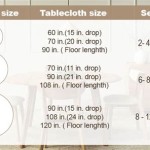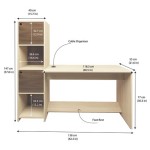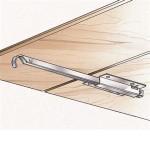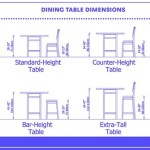6 Foot Round Dining Table: Seating Capacity and Considerations
Determining the appropriate seating capacity for a 6-foot round dining table involves a combination of understanding spatial dimensions, considering comfort, and accounting for individual dining preferences. While a simple calculation might suggest a specific number, several factors influence the actual number of people who can comfortably share a meal around such a table. This article will explore these factors in detail, providing a comprehensive guide for optimizing seating arrangements for a 6-foot round dining table.
The primary challenge in determining seating capacity centers on the concept of "comfortable elbow room." This refers to the personal space each diner requires to eat without feeling cramped or restricted by their neighbors. This space requirement isn't a fixed number and varies depending on individual body size, eating habits, and the presence of serving dishes in the center of the table. Too little space leads to an unpleasant dining experience, while too much space can make conversation difficult and the overall atmosphere feel disconnected.
Another critical aspect is the chair selection. The style and width of the chairs dramatically impact the available space around the table. Armchairs, while offering enhanced comfort, occupy significantly more space than armless chairs. Similarly, chairs with wider seats demand more perimeter room. The construction materials used in the chairs also play a role. Bulky, heavily padded chairs consume more visual and physical space compared to sleek, minimalist designs. Therefore, careful consideration of chair design is crucial when planning seating arrangements.
Furthermore, the table's intended use influences the ideal seating capacity. A 6-foot round table used primarily for formal dinners requires more generous spacing than a table used for casual breakfasts or informal gatherings. Formal dinners often involve multiple courses, requiring more space for plates, cutlery, and glassware. Conversely, casual meals usually involve fewer items on the table, allowing for a more compact seating arrangement.
Finally, the overall room size and layout contribute to the perceived comfort of the seating arrangement. A 6-foot round table placed in a small, enclosed room will feel more crowded than the same table in a large, open-plan space. The presence of other furniture, such as sideboards or buffets, also affects the available space around the table, limiting the number of people who can comfortably move around the dining area.
Estimating Seating Capacity: General Guidelines
As a general rule, a 6-foot round dining table, which measures 72 inches in diameter, can comfortably seat 8 people. This estimation assumes a standard plate size, armless chairs, and a reasonable amount of elbow room. This arrangement allows each person approximately 28 inches of table space along the perimeter. This figure is derived by calculating the circumference of the table (πd = π * 72 inches ≈ 226 inches) and dividing it by the number of seats (226 inches / 8 seats ≈ 28 inches/seat).
However, this is just a starting point. For more formal dining experiences, reducing the number of seats to 6 or 7 is often recommended. Doing so allows for greater spacing between diners, accommodating larger plates, serving dishes, and decorative centerpieces. This also enhances comfort and facilitates easier conversation between individuals seated across from each other.
Conversely, for more casual gatherings, it may be possible to squeeze in 9 or even 10 people. However, this arrangement requires smaller chairs, minimal table settings, and a willingness to accept a slightly more crowded dining experience. In these situations, carefully considering the comfort level of your guests is crucial.
The key takeaway is that the "ideal" seating capacity for a 6-foot round dining table depends on the specific circumstances and preferences of the users. There is no single "right" answer; rather, it's a matter of balancing comfort, space availability, and intended use.
The Impact of Chair Selection on Seating Capacity
The selection of dining chairs plays a pivotal role in determining the overall seating capacity of a 6-foot round table. Armchairs, due to their wider profile and the presence of armrests, require considerably more space than armless chairs. A typical armchair might occupy 24 to 30 inches of width, while an armless chair might only require 18 to 24 inches. This difference significantly impacts the number of chairs that can be comfortably accommodated around the table.
Using armchairs will almost certainly reduce the seating capacity to 6 or even 5 people, depending on the specific dimensions of the chairs. This is because armchairs not only take up more lateral space but also require more maneuvering room for diners to pull the chairs in and out from the table. Furthermore, the armrests can sometimes impede free movement and make it difficult to sit close to the table.
Armless chairs, on the other hand, offer greater flexibility and allow for a more efficient use of space. Their streamlined design allows for a more compact seating arrangement, potentially accommodating 8 or even 9 people around a 6-foot round table. The absence of armrests also facilitates easier movement and allows diners to sit closer to the table, promoting a more intimate and connected dining experience.
Beyond the presence or absence of armrests, the overall design and style of the chairs also influence the seating capacity. Chairs with thick padding and bulky frames consume more visual and physical space, making the dining area feel more crowded. Conversely, chairs with sleek lines and minimalist designs create a sense of openness and allow for a more spacious feel. Consider the overall aesthetic of the dining room and choose chairs that complement the table and the surrounding decor.
When selecting chairs, it's essential to consider the height of the seat in relation to the table's height. The ideal seat height allows diners to sit comfortably at the table with their elbows at a 90-degree angle. Improper seat height can lead to discomfort and strain, negatively impacting the dining experience. Before purchasing chairs, measure the height of the table and ensure that the seat height is appropriate.
Optimizing Space Utilization and Comfort
Beyond chair selection and general guidelines, several strategies can optimize space utilization and enhance the comfort of a 6-foot round dining table arrangement. These strategies involve careful consideration of table settings, room layout, and the use of space-saving furniture.
One effective strategy is to minimize clutter on the table. Excessive decorative items or large serving dishes can consume valuable space and make it difficult for diners to access their food. Opt for a simple centerpiece that doesn't obstruct the view across the table. If serving dishes are required, consider using a sideboard or buffet to keep them out of the way until needed. Reducing the number of items on the table will create a sense of spaciousness and allow for more comfortable dining.
The room layout also plays a crucial role in optimizing space utilization. Ensure that there is ample space around the table for diners to move freely without bumping into walls or other furniture. A minimum of 36 inches of clearance between the table and surrounding objects is recommended. Avoid placing the table in a corner or against a wall, as this will restrict movement and make it difficult for diners to enter and exit their seats. If space is limited, consider using a smaller sideboard or a wall-mounted shelf instead of a bulky buffet.
Consider the lighting in the dining area. Adequate lighting is essential for creating a comfortable and inviting atmosphere. A chandelier or pendant light positioned directly above the table can provide ample illumination while also serving as a focal point. Supplement the overhead lighting with additional lamps or sconces to create a warm and inviting ambiance. Well-lit spaces feel more open and spacious, enhancing the overall dining experience.
Finally, the use of space-saving furniture can further optimize space utilization. Consider using chairs that can be stacked or folded away when not in use. This is particularly useful for accommodating larger gatherings without permanently occupying valuable floor space. Additionally, using a table runner instead of a full tablecloth can help to minimize the visual bulk of the table and create a more streamlined look. These subtle changes can significantly impact the overall feel of the dining area, making it more comfortable and inviting for guests.
Ultimately, the key to optimizing the seating capacity and comfort of a 6-foot round dining table lies in careful planning and attention to detail. By considering the factors discussed above – chair selection, table settings, room layout, and space-saving furniture – it is possible to create a dining space that is both functional and aesthetically pleasing, accommodating guests comfortably and fostering memorable dining experiences.

Result For Round Dining Table 6 Dimensions Sizes 8 Person

Round Dining Tables Connecticut In Style Table Sizes Dimensions 8 Person

Party Center Table Seating Chart Wedding Round Sizes

Trestle Tables And Round How Many Does Each Sit Prestige Event Hire

How To Calculate The Best Dining Table Size For Your Room

Hudson 6 Ft Outdoor Round Teak Dining Table By Country Casual

Minton 6 Ft Round Teak Table Country Casual

Round Dining Tables Ideas Tips Artisan Crafted Iron Furnishings And Decor Blog

How Many People Fit At A Banquet Table Webstaurant

How To Calculate The Best Dining Table Size For Your Room








